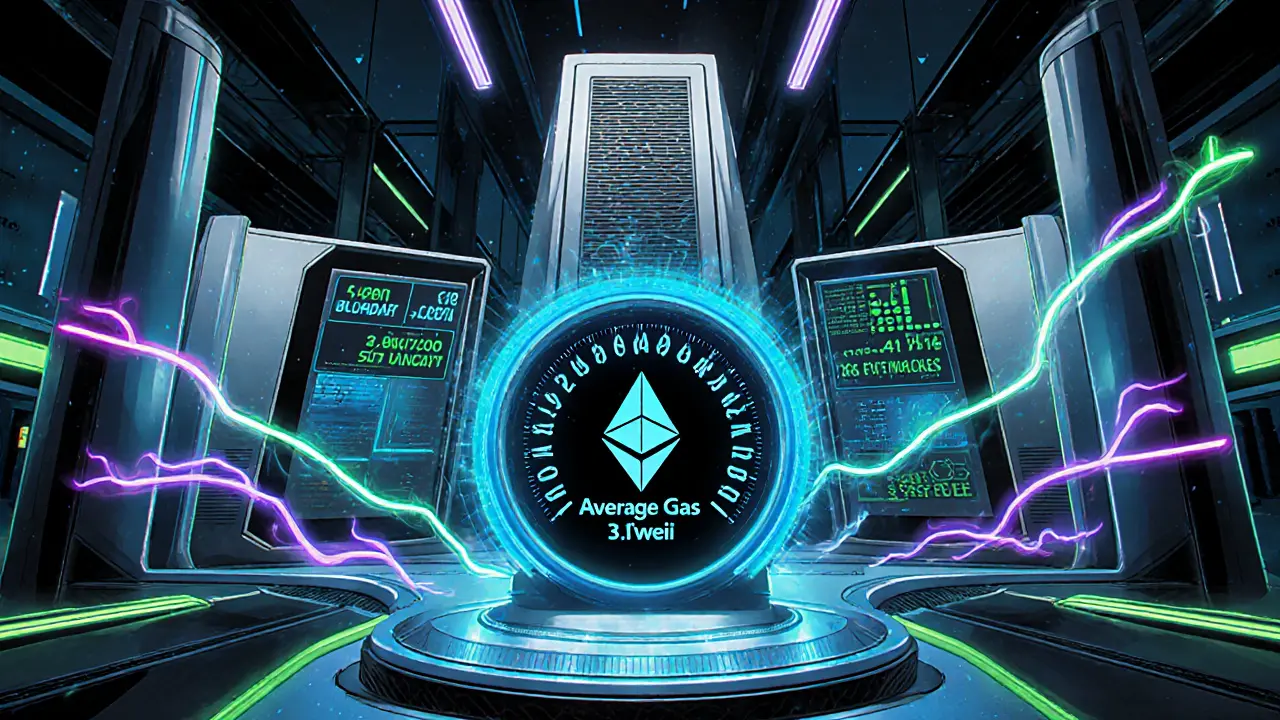Ethereum Gas Fees vs Other Platform Costs: 2025 Comparison
Explore how Ethereum gas fees dropped 95% in 2025, compare costs with Solana, Arbitrum, Optimism and Polygon, and learn practical tips to keep transaction fees low.
Continue ReadingWhen working with Ethereum gas fees, the cost you pay to get a transaction processed on the Ethereum network. Also known as gas cost, it determines whether your swap, NFT mint, or contract call goes through quickly or gets stuck.
At the core is Ethereum, a programmable blockchain that runs smart contracts. Every operation on Ethereum consumes a unit called “gas” and the network charges a base fee plus an optional priority fee to incentivize miners or validators. The upgrade known as EIP‑1559, the fee‑market change introduced in 2021 reshaped this model by making the base fee algorithmic and burning a portion of it. This means the total fee you see now is the sum of the burned base fee and the tip you add for faster inclusion.
Ethereum gas fees encompass two main parts: the deterministic base fee that adjusts to network demand, and the user‑set priority tip that speeds up confirmation. congestion spikes drive the base fee up, which is why you often see fees soar during popular token launches or NFT drops. Smart contracts, which are self‑executing code on Ethereum, typically require more gas because they involve multiple operations. Understanding the gas limit, the maximum amount of gas a transaction can consume helps you avoid out‑of‑gas errors and wasted ETH.
Here are a few tips you can start using right now. First, check real‑time fee trackers before you send anything; tools like the TradeComing gas monitor show the current base fee and recommended tip. Second, consider timing your transactions for off‑peak hours—usually early UTC mornings when fewer users are active. Third, if your activity supports it, use Layer 2 solutions such as Optimism or Arbitrum; they bundle many transactions and settle a single proof on Ethereum, slashing fees by an order of magnitude. Finally, for developers, optimizing contract code to reduce unnecessary op‑codes can cut the gas each call requires, saving both users and yourself money.
All of these ideas tie back to the core idea that Ethereum gas fees are a dynamic cost tied to network usage, protocol rules, and user behavior. Below you’ll find a curated set of articles that dive deeper into gas price forecasts, EIP‑1559 mechanics, fee‑saving strategies for traders, and the impact of upcoming upgrades on transaction costs. Browse the list to sharpen your fee‑management game and stay ahead of market moves.

Explore how Ethereum gas fees dropped 95% in 2025, compare costs with Solana, Arbitrum, Optimism and Polygon, and learn practical tips to keep transaction fees low.
Continue Reading